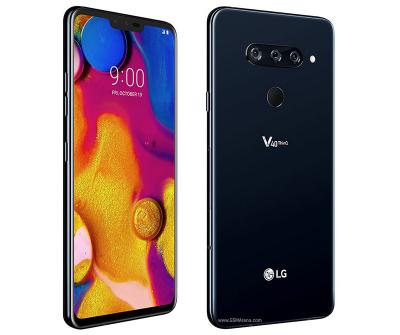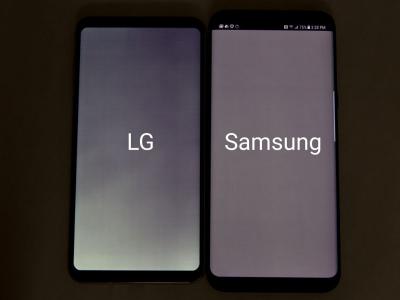OLED is an emerging display and lighting technology that enables beautiful and efficient displays and lighting panels. Thin OLEDs are already being used in many mobile devices and TVs.
LG Display - pOLED displays
LG Display is one of the leaders in OLED production. LG Display started producing flexible OLEDs for mobile devices in 2015, initially focusing on small wearable OLEDs - for devices such as Apple's Watch and LG's own wearables.
In October 2017, following a large expansion in LGD's AMOLED production capacity, LG Display started to produce large flexible OLEDs for smartphones. This is when LGD also started to brand its OLED displays as pOLEDs (p is for plastic). LGD now provides its pOLED displays for several smartphone vendors, including Apple.
LGD pOLED production fabs
LG Display has several flexible OLED production fabs. The first one was a pilot 4.5-Gen line, with limited capacity - and so the E2 line is used to produce LGD's flexible wearable OLED displays.

LG Display's second pOLED fab is is its E5 line in Gumi, which has a monthly capacity of 7,500 monthly 6-Gen substrates (or about 1.5 million 5.5" panels at 100% yields). LG Display's thoird line is the E6 line in Paju which is another 6-Gen line, but with a larger capacity of 15,000 monthly substrates.
LG's fourth flexible OLED line may be built at the company's large P10 display production complex in Paju. The P10 will be a large display complex with a total investment of close to $10 billion - but will mostly produce OLED TV panels. It could include a flexible OLED line, but LG's plans are not finalized yet, its seems.
pOLED vs PLED
pOLED is LG Display's brand name for mobile flexible AMOLED displays. Somewhat confusingly, PLED, also called P-OLEDs, are Polymer-based OLED materials - a class of materials pioneered by CDT (now owned by Sumitomo) that can be used to create OLEDs (most OLEDs today use Small Molecule OLED materials). For more on PLEDs, see here.
Further reading
The latest LG pOLED news:
Google responds to user complains on the Pixel 2 XL display
Google started shipping its Pixel 2 XL smartphone a few weeks ago, and this is one of the first two phones to adopt LG Display's new 6" 1440x2880 (538 PPI) pOLEDs. While on paper these displays are superb, actual reviews were rather dismal - to the point that some reviewers say that these are simply "bad displays".
![]()
Both reviewers and customers complain about bad color reproduction, graininess and problematic viewing angles. In addition many users seem to report serious image retention issues. Google has now posted an update regarding the Pixel 2 XL display.
Disappointing reviews on LG's new pOLED smartphones displays
Both LG (the V30) and Google (Pixel 2 XL) recently introduced smartphones that use LG's new pOLED smartphone displays, both with the same display - a 6" 1440x2880 (537 PPI).
![]()
An early pre-production review of LG's V30 claimed that the display suffer from serious quality issues, and now reviews of commercially-sold units confirm the display problems.
Google announces the Pixel 2 and Pixel 2 XL OLED smartphones
Google announced its 2nd-generation own-brand smartphones, the Pixel 2 and Pixel 2 XL. The Pixel 2, produced by HTC, sports a 5-inch FHD (441 PPI) AMOLED display (made by SDC), a Snapdragon 835 chipset, 4GB of RAM, 64/128 GB of storage and a 12 MP camera.
![]()
The Pixel 2 XL, manufactured by LG, has similar features, but with a larger 6" QHD+ (537 PPI) pOLED display - made by LGD.
Ars Technica - LG latest flexible OLEDs suffer from serious quality issues
A couple of days ago we reported that Android Authority reviewed LG V30's display, which uses LGD's flexible pOLED panels, with very positive results - saying that LGD's mobile OLEDs are highly competitive with Samsung's latest Super AMOLED displays.

Ars Technica also posted an early review of a pre-production V30 device, but its conclusions are very different. While the display sounds great on paper, Ars Technica says (and it's got photos to prove) that in a dark room the display suffers from a grainy image and horizontal banding. The light level is also woefully uneven, with hotspots blazing out of the left and right corners.
Will LG produce the OLED screen for Google's upcoming 2017 Pixel XL smartphone?
AndroidPolice blog claims it has exclusive information regarding Google's upcoming flagship smartphone, the 2017 Pixel XL. Besides the leaked image you see below, the blog claims that the Pixel XL will use a 6" flexible OLED display (2:1 aspect ratio) - produced by LG Display.
![]()
The OLED display will have (according to the leaked image) curved corners - but it will not sport an edge-folded design.
Pagination
- Previous page
- Page 5



